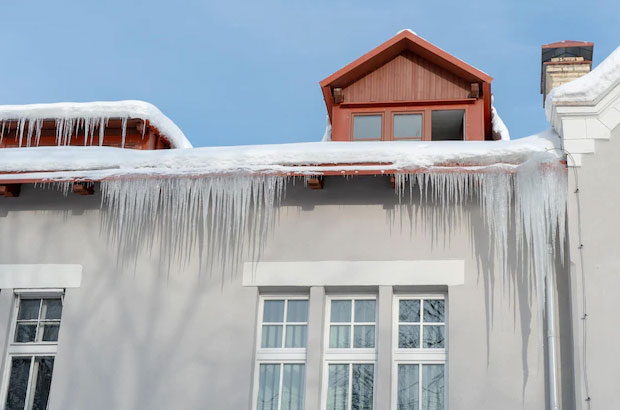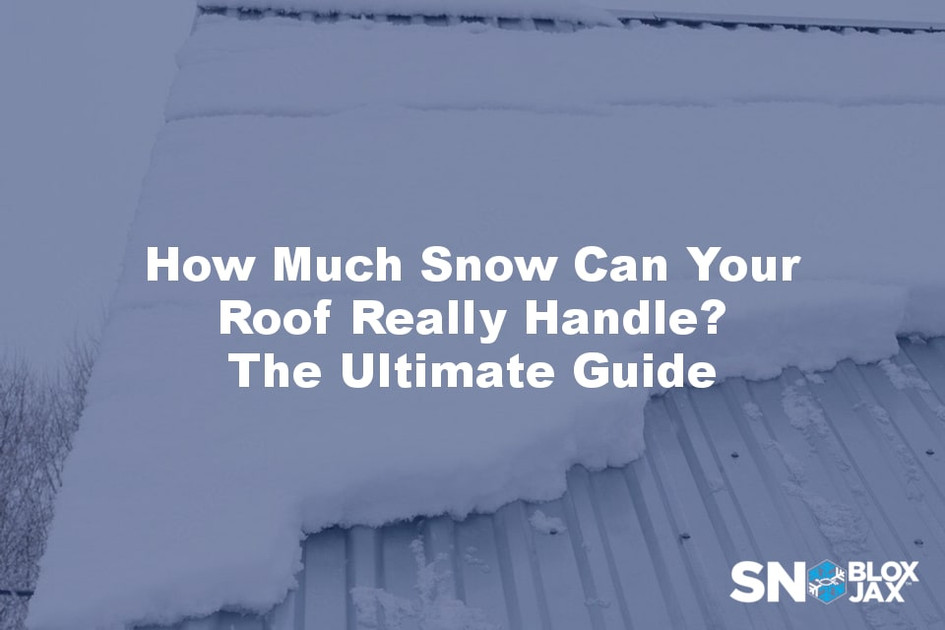How Much Snow Can Your Roof Really Handle? The Ultimate Guide
Posted by SnoBlox-Snojax on Nov 17th 2022
It's the most wonderful time of the year! No, not Christmas - we're talking about snow season. And while a little bit of snow is beautiful, too much can be dangerous. One of the most important things to remember during a big snowstorm is how much weight your roof can take. In this blog post, we'll discuss the maximum amount of snow your roof can handle and how to calculate it. We'll also provide some tips on what to do if you get too much snow on your roof!
Is It Good To Have Snow On Your Roof?
A layer of fresh snow on your roof is not only beautiful, it can actually be beneficial! Snow on your roof acts as an insulator, keeping heat in and preventing heat loss through the roof. So, if you want to keep your energy bills low this winter, consider leaving a little bit of snow on your roof.
How Much Snow Does Your Region Get?
Before we get into the nitty-gritty of calculating snow load, you need to know how much snow your region gets. This information is important because it will help you determine the maximum amount of snow your roof will need to handle.
The first step is to find out the average snowfall in your area. You can do this by visiting the National Weather Service's website and searching for your city or region.
Once you know the average snowfall, you need to find out the range. This is the difference between the lowest and highest amount of snowfall in a given year.
For example, if the average snowfall in your area is 30 inches, with a range of 20-40 inches, that means your roof should be able to handle up to 40 inches of snow.
Now that you know the average snowfall and the range for your region, you can start to calculate the maximum amount of snow your roof can hold.
How Much Snow Weighs?
The next step is to find out how much snow weighs. This information is important because it will help you determine the maximum amount of snow your roof can hold.
In short, fresh fluffy snow weighs approximately 7.5 pounds per square foot, but ocne compacted, snow can weigh 20 pounds per square foot or more. Wet snow can also weigh considerably more than fresh fluffy snow.
To calculate the weight of snow on your roof, you need to know the following:
- The dimensions of your roof
- The type of snow
- The density of the snow
-The angle of your roof
The weight of snow can vary greatly depending on the type and density of snow. It's important to keep this in mind when calculating the maximum amount of snow your roof can hold.
What Is The Maximum Snow Load On A Roof?
What is the maximum snow on rooftop weight that your house is capable of? This information is crucial to know, as too much weight on your roof can cause it to collapse.
There are a few factors that will affect the maximum snow load on your roof, such as:
- The type of roof
- The pitch of the roof
- The type of snow
- The material of the roof
- The age of the roof
- The condition of the roof
For example, a pitched roof will hold less snow than a flat roof. This is because the snow will slide off a pitched roof much easier than it will off a flat roof. This makes snow dangeorus however, so you might want to consider getting snow guards for a pitched roof.
Additionally, the type of snow will also affect the maximum snow load on your roof. For example, fresh snow is much lighter than compacted snow, so it will not weigh down your roof as much.
To find the maximum snow load for your roof, you will need to consult your local building code. This information can be found on the website of your city or county government. You can also use snow load calculators online.
How Much Snow Load Can A Roof Handle?
The answer to this question varies depending on the factors we mentioned above. If you're consfused, here's a quick calculation you can do to determine the snow load of your roof:
First, you need to know the dimensions of your roof.
Let's say your roof is 30x50 feet. Don't forget to also work out the pitch of your roof.
Next, you need to know the type of snow and its density. Since you want to determine the maximum snow load, do your calculations with packed snow or ice. Packed snow has a density of 20 pounds per cubic foot.
Next, calculate the weight of snow on your roof by using this formula:
Calculated Roof Loading (lb/ft2) = Depth (ft) x Density (lb/ft2 /ft depth)
For 3 feet of packed snow, you can do the following calculation: 3x20=60 lb/ft2. That means when there are 3 feet of snow, the loading on the roof will be 60 lb/ft2. Also, keep in mind that ice dams can form under the snow. Ice is very heavy due to its density and can cause severe damage to roofs.
Signs Of An Overloaded Roof
It's important to be aware of the signs of an overloaded roof.

Some of the signs that indicate your roof is overloaded and at risk of collapsing are:
- Sagging
- Cracks
- Leaks
- Noises
If you notice any of these signs, it's important to remove the snow and ice dams from your roof as soon as possible. You can do this yourself if it's not too heavy. If the snow is too heavy for you to remove, you should call a professional to do it for you.
How do I keep snow off my roof?
There are a few things you can do to prevent snow and ice from building up on your roof:
- Install icebreakers
- Use heat cables
- Keep your gutters clean
You can also use a roof rake to remove snow from your roof. If you live in an area that gets a lot of snow, it's important to know how much your roof can support. This information is crucial to prevent your roof from collapsing due to heavy wet snow.
You can determine the maximum snow on the roof by consulting your local building code or using a snow load calculator.
If you notice any signs that your roof is overloaded, it's important to remove the snow and ice as soon as possible to prevent further damage.
Does Insurance Cover A Damaged Roof?
Thankfully many homeowners' policies do cover weather-related accidents and damage from snow. However, it's important to check with your insurer to see if your policy covers snow and ice damage.
FAQs
Should Icicles be removed from my roof?
Icicles may look pretty, but they can be dangerous. They can fall and injure people or damage property. It's best to remove them before they become too large.
Tell me the best pitch roof for snow?
The best pitch for a roof that needs to support snow is around 30 degrees. Flat roofs are not recommended in areas that get a lot of snow.
How to remove snow from solar panels?
You can use a roof rake to remove snow from your solar panels. Just make sure to be as gentle as possible to prevent damage to the solar panels.

